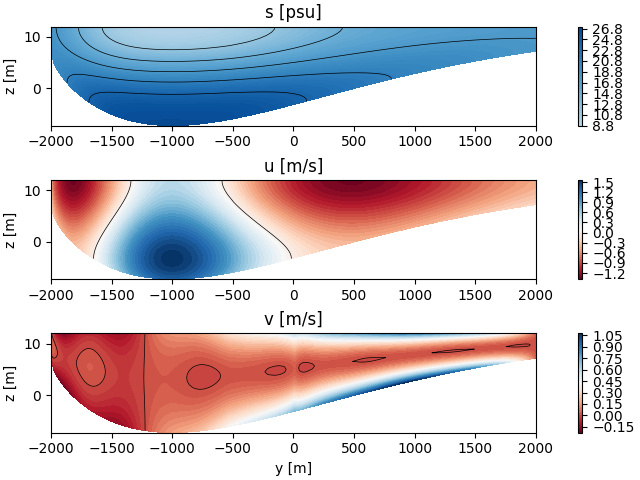Hendrik Jongbloed1,2*, Henk M. Schuttelaars2, Yoeri M. Dijkstra2, Antonius J.F. Hoitink1
1 Hydrology and Quantitative Water Management, Wageningen University and Research, Wageningen, The Netherlands; 2 Delft Institute of Applied Mathematics, Delft University of Technology, Delft, The Netherlands
Corresponding author: Hendrik Jongbloed,
In estuarine networks, channel junctions control the division and dispersion of salt between network branches. Whereas dominant salt transport processes in single channel systems are relatively well understood in a width-averaged sense (Hansen and Rattray, 1965), the bathymetric variations around channel junctions complicate similar idealized analyses. Expanding our knowledge of the complex interactions between lateral and longitudinal salt transport processes induced by the geometric complexity of channel junctions is needed to understand salt distribution in estuarine networks and develop efficient one-dimensional salt intrusion models.
As a first step in resolving salt transport processes around junctions, we construct a three dimensional subtidal idealized model for water motion and salinity in partially stratified estuaries. It provides an extremely fast and numerically accurate way of computing salinity distributions in general geometries and analyzing the dominant salt transport processes. The model extends the width-averaged approach of e.g. MacCready (2004) to general 3D geometries. Following these authors, the vertical dimension is solved analytically. The solution for the horizontal dimensions is formulated using a numerical finite element method with flexible grid size. The resulting coupled system of nonlinear partial differential equations is solved iteratively. The idealized model is limited to well-mixed and partially stratified conditions and will be compared to high-complexity numerical models to test its validity.
As a proof of concept using the newly derived model, we present preliminary results regarding the sensitivity of dominant salt transport processes and salt intrusion with respect to longitudinal and lateral bathymetric variations within a single channel system. Systematic exploration of these sensitivities is expected to lead to improved salt dispersion coefficients and, eventually, nodal point relations between junction branches.

Figure 1: Cross-sectional visualizations of salinity, along-channel flow and cross-channel flow, with salt transport dominated by gravitational circulation inducing lateral circulation through bathymetric variations.
References
Hansen, D. V., & Rattray, M. (1965). Gravitational circulation in straits and estuaries. Journal of Marine Research, 23(2), 104–122.
MacCready, P. (2004). Toward a unified theory of tidally-averaged estuarine salinity structure. Estuaries, 27(4), 561–570. https://doi.org/10.1007/BF02907644
I. Surname1*, F.N. Another-Surname2 , Y. Next-Surname2
1 University Name, Country; 2 Organization Name, Country
* Corresponding author: mail.name@organization.org


